October 2012 Archives
Charles Williams (active 1797-1850), A Ward of Chancery, & a Commission of Lunacy Superseded, March 16, 1807. Etching with hand coloring. Graphic Arts Collection GA 2012.02667
This print, surprisingly, refers to the Criminal Lunatics Act of 1800, which required the indefinite detention of mentally ill offenders. It was passed thanks to chief counsel Thomas Erskine (1750-1823), who argued that an actor named James Hadfield (1771/72-1841) was insane when he tried to shoot King George III during a performance at the Drury Lane Theatre. Erskine convinced the judge that Hadfield had only pretended to kill the King because the actor wanted to die and knew he would be killed for the attempt.
Since the laws of the time had no provision for holding or treating criminals who were found to be insane, a bill was rushed to the House of Commons so that Hadfield would not be set free. No more than four days after the trial, “A Bill for Regulating Trials for High Treason … and for the Safe Custody of Insane Persons Charged with Offenses,” also known as the Criminal Lunatics Act was passed.
Erskine was made Lord Chancellor in the Ministry of All the Talents, although he had no background for the office and only lasted fourteen months in the position. He is seen here rescuing a dog that was being beaten by a group of boys. This actually happened in February 1807 and Williams finished the print a few weeks later, referencing Erskine’s history of rescuing mad men and mad dogs.
Continental Life Insurance Company of Hartford, Conn. Published by Major & Knapp, New York City, no date [after 1863]. Proof lithographs, one with hand coloring. Graphic Arts GC178.
It is ironic that Joseph Knapp (1832-1891), soon to be president of the Metropolitan Life Insurance Company, would work so hard to prepare and print the advertising for the Continental Life Insurance Company.
Sixteen year old Knapp took an apprenticeship with the New York City lithographic printing firm of Sarony & Major. When he turned twenty-one in 1852, Knapp became their general manager and then, a partner. Thanks to his considerable business skills, Knapp grew the business into one of the most successful lithographic presses in the United States.
It was at this time that Major & Knapp prepared several versions of an advertising poster for Continental Insurance. A revolutionary soldier was used on this and other print materials, which became the firm’s icon.
Knapp’s attention and his considerable fortune turned to the insurance business. He served on the board of the Metropolitan Life Insurance Company and was eventually named the second president of the company. When Knapp stopped printing, Continental Insurance transferred their business to Louis Prang (1824-1909), who redesign the company’s advertising (left) while maintaining the symbol of the revolutionary soldier.
“Final Stone Placed In Firestone Library,” Daily Princetonian, 72, no. 124 (June 9, 1948).
“The last stone in the new Firestone Library was laid yesterday by President Dodds, who first received an honorary local membership card in the Bricklayers, Masons and Plasterers International Union. Excavation work on the building, which will cost over six million dollars when completed, was started in January, 1946. The library staff will start moving the books from the old building on July 6.
The last stone was laid in the tower, for which funds given by members of the Class of 1911 had been earmarked. Those present at the ceremony included Robert B. O’Connor, of the firm of R. B. O’Connor and Walter H. Kilham Jr., of New York City, architects of the library; H. A. Schroedel, project manager for the Turner Construction Co.; and 28 stone masons who have worked on the building for 16 months.
Mr. Schroedel said that the architects had prepared more than 2,000 blueprints, which had called for many consultations. He presented Mr. O’Connor a silver trowel as “the man who deserves the credit.” Mr. O’Connor, in turn, praised the workmanship of the stone masons, which he described as outstanding. The building will provide nearly 600 study carrels for students, offices for Faculty members and departmental meeting rooms, in addition to general reading and reference rooms.”
Copper printing plate for Kemp’s Old Tobacco Successor to M. Wheatly near [?] New Church IIIV Strand, London, 1700s. Gift of Allen Scheuch II, Class of 1976. Graphic Arts Collection 2012- in process.
London directories for the 1780s and 1790s all list two tobacco merchants named Kemp: Kemp & Bourguigon, 28, King-Street, Tower-hill; and Anthony Kemp, Tobacconist & Brandy Merchant, 87, Aldgate. We have not been able to find one on the Strand or named Wheatley.
During the 1920s, a number of Russian artists living and working in Paris formed the L’Union des Artistes Russes. To help raise funds they held several spectacular charity balls, organized primarily by Natalie Goncharova (1881-1962) and her husband Mikhail Larionov. These included the Grand Bal des Artists, (alternately: the Grand Bal Travesti Transmental) in 1923; the Bal Banal in 1924; the Bal Olympique (alternately: the Vrai Bal Sportif) also in 1924; and the Grand Ourse Bal in 1925.
A collage poster for the Bal Olympique was created by the Russian-born artist Pavel Tchelitchew (1898-1957), who was introduced to Goncharova through Sergei Diaghilev and the Ballet Russe. Tchelitchew lived in Berlin between 1821 and 1923, and had only just arrived in Paris when he collaborated with Goncharova on the Bal Olympique. She often asked fellow artists to create original posters for a pre-ball competition and charity auction. This may be one.
The program for the Bal Olympique featured dances and choreographic events by Olga Koklova and the Ballets Suédois; “danses du homard, crabe et crocodile” with costumes by Vassilieff and Léger; boxing matches overseen by Foujita; a “Spectacle sur l’Échelle” by Tristan Tzara; “poëmes en relief” by Iliazd and Kakabadze; a “nouveau système de projections fantastiques” by Larionov; and much more.
Tchelitchew only spent ten years in Paris before moving to the United States with his partner, the writer Charles Henri Ford (1913-2002). More of his work can be found in their journal View (RBSC EX Little Magazines).
Since the summer of 2008, when Professor Rubén Gallo first entered a tiny French antique shop and discovered a 1920s Pathé-Baby home movie projector along with approximately eight hundred 9.5 mm silent films, we have been working to bring this material into the classrooms of Princeton University.
Thanks to the generous support of Lynn Shostack and the David A. Gardner '69 Magic Project in both 2009 and 2010, we were able to partner with the Colorlab Preservation Laboratory of Rockville, Maryland, which is one of the few companies in the United States capable of undertaking the arduous process of hand-cleaning, replasticizing, and transferring the 9.5 mm film stock to a digital medium. Each film was treated individually, and a pause was inserted at a total of 11,067 title frames to give enough time for them to be read.
The first group of digitized films is now available for viewing. Each film is only two or three minutes long. You can either browse the pages of the website or search by key word using the box at the top right. Some films last through more than one reel and a few are hand colored. We will continue to add new films to the site as they are catalogued.
We are extremely grateful to Lynn Shostack and the Gardner fund, along with the entire Council of the Humanities, led by Executive Director Carol Rigolot, for their support and encouragement of this magical project.
[Don't miss The Voice of the Nightingale, A fairy tale in 4 parts adapted for the screen by M. Starewicz. http://rbsc.princeton.edu/pathebaby/node/1776]
The American inventor Cyrus McCormick (1809-1884) patented a mechanical reaping machine and in 1847, moved his business to Chicago to form the McCormick Harvesting Machine Company. When he died, his son Cyrus McCormick II (1859-1936, Class of 1879 H1887) took over and began hiring professional artists to decorate and promote the business. Albert Herter (1871-1950) and his assistant Bror Nordfeldt (1878-1955) were two of the artists commissioned to paint company murals.
When McCormick merged the firm with J.P. Morgan’s Deering Harvester Company in 1902, forming the International Harvester Company (IHC), painters and printmakers were again used to promote the new company. Hugo David Pohl (1878-1960) was among the men hired to paint panoramic murals at IHC depicting harvests in various countries.
It took Pohl eighteen months to finish his commission and when it was done, he left Chicago for San Antonio, Texas. Pohl opened a studio specializing in mural decoration and eventually became president and director of the San Antonio Academy of Art.
The IHC passed to Harold Fowler McCormick (1872-1941, Class of 1895) and in 1966, the family’s collection of art and books was given to Princeton University Library, including one of Pohl’s panoramic paintings. Presumably a model for an IHC mural, the painting highlights a series of inventions including a steam engine, a horse-drawn McCormick reaper, and an early airplane (probably to please Harold, who was an aeronautics enthusiast).
In 1919, the Princeton University Classics Department added two new professors, Paul Coleman-Norton in Roman studies and Shirley Weber (1883-1962) in Greek studies. Weber left in 1937 to become librarian of the Gennadeion of the American School in Athens. Except for a brief hiatus during WWII (1941-1946) when the library was closed, Weber worked in Greece until his retirement in 1953.
It was at this time that he returned to Princeton to work on Princeton’s Virgil collection, preparing a check-list and descriptive catalogue we still keep in our reading room. Professor Weber also donated a small, colorful collection of tin Roman soldiers, which now resides in TC074 the toy theater collection under the graphic arts collection. Here are a few of the figures.
The Vergil Collection in the Princeton University Library. A Check-List and Descriptive Catalogue, compiled by Shirley H. Weber … ([Princeton, N.J.] Princeton University Library, 1956). Typescript. Rare Books: Reference Collection in Dulles Reading Rm. (ExB) Z8932 .xP7
This satire on the Metropolitan Water Supply of London was drawn and etched by William Heath. Although not dated, the Commissioners were appointed in 1827 and reported in 1828. This is also the time when Heath was using the figure of Paul Pry as his signature [bottom left]. Here Pry has his own water pump and says “Glad to see you hope to meet you in every Parish through London.”
The young, obviously well-read artist often used verses from Shakespeare or Milton as the basis for his satire. For this print, he takes a section from Paradise Lost, which reads, “Where all life dies, death lives, and nature breeds / Perverse, all monstrous, all prodigious things / Abominable, inutterable, and worse / Than fables yet have feigned or fear conceived / Gorgons, and Hydras, and Chimeras dire.”
Princeton recently acquired a unique compilation of caricatures organized by one of Heath’s publishers, Thomas McLean, in the early 1830s. The album includes approximately sixty hand-colored caricatures, most by Heath but also a handful by Robert Seymour, Michael Egerton, Robert Cruikshank, and another unidentified artist.
McLean sold many versions of these albums, each with its own decorative letterpress title page. This one reads: A Select Collection of Humourous Engravings, Caricatures, &c. by Various Artists Selected and Arranged by Thomas McLean.
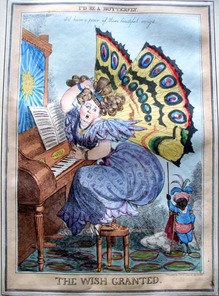 Attributed to William Heath, The Wish Granted. [above design]”I’d be a butterfly,” 1820s. Note the same carpet in both prints.
Attributed to William Heath, The Wish Granted. [above design]”I’d be a butterfly,” 1820s. Note the same carpet in both prints.
I am working on a catalogue raisonné of William Heath, including his prints, drawings, and illustrated books. Here’s a first draft (pdf). If anyone would like to comment or correct, I’d be glad to hear from you.
http://libweb5.princeton.edu/visualmaterials/gapdf/heath list 6.pdf
Jean-Baptiste-Camille Corot (1796-1875), Exposition de l’oeuvre de Corot: a l’École nationale des beaux-arts. Notice biographique par M. Ph. Burty (Paris: Typographie Jules-Juteau et fils, 1875). Two woodburytypes from negatives by Charles Desavary. Graphic Arts Collection (GAX) in process.
Barbizon School painter Jean-Baptiste-Camille Corot (1796-1875) is remembered for many things, one of which being his innovations in plein-air landscapes (completed outside at the scene rather than inside a studio). He was also an early experimenter in photography.
In the 1850s, a circle of artists living and working in Arras were introduced to cliché-verre, the technique of sketching on a coated glass plate that is developed and printed as a photographic negative. These men included Corot and his friend, photographer Charles Desavary (1837-1885), who printing most of Corot’s glass negatives.
Late in his life, Corot posed for a series of portraits by Desavary, as though he was painting plein-air, sitting at a canvas under a white umbrella in his garden.
Corot died in February 1875 and an exhibition in his honor was mounted at the École nationale des beaux-arts in Paris, surveying the artist’s complete works. The surprisingly slim exhibition catalogue was published in two editions; the first was a large paper edition with two of Desavary’s portraits printed by Rose-Joseph Lemarcier (1803-1887) whose firm specialized in making woodburytypes. The second edition, slightly smaller in size, used various left-over prints indiscriminately pasted onto the frontispiece of each volume, as the supply allowed.
We recently unrolled a large, Japanese embroidery for the first time in many years. At the top of the ten-foot tapestry is a white mountain that might refer to Tendaisan, the holy mountain of the Tientai sect of Buddhism.
According to Carter Horsley, “The Mountain was a favorite pilgrimage site for generations of Chinese and Japanese monks and literary men, who extolled its beauty in a number of memorable accounts. One of the most impressive sights on the mountain was an extraordinary natural stone bridge, which is described in Chinese literature as rising to a height of eighteen thousand feet, its curve likened to the arc of a rainbow or the back of a giant turtle. Watered by the mist rising from nearby falls, its stone surface was covered with a slippery layer of ancient moss.”
This site is also found in the Japanese No play, Shakkyô (The Stone Bridge), by Kanze Motokiyo (1343-1443). The play tells the story of a wealthy Japanese businessman who renounces his life and becomes a priest. He makes a pilgrimage to Tendaisan and the grave of Monju Bosatsu, who is usually seen with an animal known as Shishi, similar to a lion.
The embroidery has many of these Shishi figures, climbing and tumbling down the design. According to one legend, the lioness would take her cubs to the Shakkyô and only the ones who were capable of climbing to the top would be nurtured by the mother.
Franz Kafka (1883-1924) first met Milena Jesenská (1896-1944) when she worked as the Czech translator of his early short prose work. In April 1920, he began a correspondence from a pension in Meran, which extended through March 1924, three months before his death. In one of the early letters, he describes his fears as a young boy of six walking across Prague to the elementary school.
Letters to Milena was published in New York and Frankfurt in 1953, edited by Willi Haas. The photographic essay, Prague Through Kafka’s Eyes, was shot by Ruth Ivor (1912-2008) while on assignment for Life magazine in 1965 and left on deposit at Princeton University Library in 1980.
With sincere thanks to the Ruth Ivor Foundation, a complete set of Ms. Ivor’s Prague photographs is now a permanent part of our Graphic Arts Collection. These are a few examples.
Franz Kafka (1883-1924), Letters to Milena. Edited by Willi Haas; translated by Tania and James Stern (New York: Schocken Books [c1953]) Firestone Library (F) PT2621.A26 Z5513 1953.
Margarete Buber-Neumann (1901-1989), Mistress to Kafka: the Life and Death of Milena; introduction by Arthur Koestler (London: Secker & Warburg, 1966). Firestone Library (F) PT2621.A26 Z6463 1966
Edward Jones (1752-1824), A Selection of the most Admired and Original German Waltzes, never before Published; adapted for The Harp, or Piano-Forte; Most respectfully Dedicated, by Permission, to Her Royal Highness Princess Charlotte of Wales, by Edward Jones, Harp Master, and Bard to His Royal Highness the Prince of Wales (London: Printed for the Editor, 1806). Frontispiece drawn and engraved by Thomas Rowlandson. Graphic Arts Collection, Kane Room Rowlandson 1806.4
Welsh harpist Edward Jones dedicated this group of waltzes to ten-year-old Princess Charlotte of Wales, the daughter of his patron George, Prince of Wales later to become King George IV. At the time, Jones was living in St James’s Palace. A collector of music, Jones was clearly ahead of his contemporaries in his appreciation for the waltz. While popular in Austria and Germany, the dance had not yet penetrated British Society.
According to Erin Smith, writing for the Jane Austen Society, “dance historians can point to the exact moment the waltz was introduced officially into mainstream English society: the King’s Birthday Ball in July of 1816, almost to the day that Austen put her finishing touches on the first draft of Persuasion and just under a month before she finished it completely. In a review dated 16 July 1816, a writer from the London Times reported: ‘We remarked with pain that the indecent foreign dance called the Waltz was introduced (we believe for the first time) at the English court on Friday last.’” Erin Smith, “Dancing in a New Direction: Jane Austen and the Regency Waltz,” Persuasions On-line, v. 30, no. 2 (spring 2010)
Jane Austen (1775-1817), Northanger Abbey: and Persuasion (London: John Murray, Albemarle-street. 1818). Rare Books (Ex) 3612.1.368.11
In January 1902, the Ohio Democratic Party opened its first permanent state headquarters in Columbus. Ten years later, Ohio voted for Woodrow Wilson (1856-1924), the first Democratic president in the 20th century and the 28th president of the United States.
The Graphic Arts Collection holds the engraved printing plate for a certificate of greeting to President Wilson from the Democrats of Ohio, “as a humble testament of their pride in the great party of principle founded by Jefferson, immortalized by Jackson, and symbolized by your choice as titular head and dignified (?) bearer, and this greeting is a modest token of confidence in you…” The plate is not dated but we believe it to be ca. 1912/1913.
In a strong wooden box with the name Myers stamped on the side, we recently discovered a wrapped banner. When it was unrolled, we found this beautiful lithographic World War I recruitment poster (~5 x 8 feet) in perfect condition.
William Starr Myers (1877-1954) was a professor of history and politics at Princeton University and a noted historian of New Jersey and the Republican Party. Our Mudd Manuscript Library holds the William Starr Myers Papers documenting the history of his teaching career and published works [MC098].
The bulk of the collection was donated by Mrs. Margaret Myers in May 1956. Most likely, this box came later or perhaps was separated from the rest of the collection. Happily, it is now moving back to Mudd Library to be included with Mr. Myers’ papers.
Manhattan Rifles! 1861-65. Civil War Recruitment Poster, featuring a Zouave, for New York Infantry Regiment, 12th (Lieut. Col. Geo. F. Watson, Comm’dg. Major Jno. M. Freeman). © New York Historical Society PR.055.3.226
The central image in our broadside is signed Shugg.
Thanks to the Verona Printers in Gill, Massachusetts, we known their family’s printing business was begun in the early 1850s by the New York City chromolithographers at Richard Shugg & Company. “His son, Calvin Shugg, was a photoengraver and Calvin’s brother, Charles B. Shugg, was a pioneer in zinc plate printing. Their cousins were Proctor and James Shugg, of Shugg Brothers Engravers and Lithographers in New York City. Charles’ son, Charles P. Shugg, was also a well-known lithographer and plate-maker. Calvin’s son, William Shugg, worked in photography for print advertising.”
In 1903, the Manhattan Rifles became the first all Jewish regiment in the American National Guard. It is unclear what the relationship is, if any, between the first and the second organization.
“In commemoration of the seventy _ time of the Black Crook. The Boston Theater on Wednesday November eighth MDCCCXCIII [1893].” Cast plaster. Graphic Arts GAX 2012- in process.
The Black Crook opened at the Boston Theatre on September 4, 1893 and played until January 6, 1894. At that time, eighteen weeks was the longest consecutive run of any Boston Theatre production. The original 1866 production of this 5 1/2 hour musical comedy ran for over 2 years in New York City. It’s success may have been due to the 100 “scantily-clan” female dancers.
Nearing the seventieth performance at the Boston Theater, a celebrate was arranged. The Boston sculptor Max Backmann was commissioned to create this commemorative souvenir: an artist’s palette with the actor’s faces as the painter’s colors.
See also Cecil Michener Smith (1906-1956), Musical Comedy in America: from The Black Crook to South Pacific (New York: Theatre arts books, 1981). Mendel Music Library (MUS) ML200 .S66
The New York Public Library has released a number of tracks with recreations of the musical’s numbers:
You Naughty, Naughty Men Libby Dees and Adam Roberts
The Black Crook Gallop Adam Roberts
The Fairy Queen March Adam Roberts
These songs are released under a Creative Commons BY-NC-SA 2.0 license. This means you can download, share, and remix the files as long as you credit the original artists, do not use them for commercial purposes, and license any new work you make with the audio under a similar license.
This portrait of Argentine novelist and short story writer Julio Cortázar (1914-1984) was created from memory by his Argentine friend and frequent collaborator Julio Silva (born 1930).
They met in Paris, where Cortázar moved in 1951 and Silva shortly after in 1955. Their first published collaboration came in 1966 when Silva provided lithographs to complement Cortázar’s Les discours du Pince-Gueule. They worked closely on the collage books, La Vuelta al Día en Ochenta Mundos (1967) and Último Round (1969) and then Territorios (1978). In 1976, Cortázar dedicated Silvalandia to the artist, who provided the illustrations.
Jorge Luis Borges wrote, “No one can retell the plot of a Cortázar story; each one consists of determined words in a determined order. If we try to summarize them, we realize that something precious has been lost.”
Julio Cortázar (1914-1984), Ultimo Round (México: Siglo Veintiuno Editores, 1969) Rare Books (Ex) Item 4913202
Julio Cortázar and Julio Silva, Les discours du pince-gueule. Nouv. éd. (Saint-Clément-de-Rivière: Fata Morgana, 2002). Graphic Arts RCPXG-7055109
Julio Cortázar (1914-1984), La vuelta al día en ochenta mundos. 5. ed. ([Mexico] Siglo Veintiuno Editores [1969]) Firestone Library (F) PQ7797.C7145 V845 1969
Julio Silva (born 1930), Julio Cortázar, 1991. Ink and brush drawing. Graphic Arts Collection GAX 2012- in process
The American bandbox is traditionally made from curved and sewn paste-board, covered with decorative wallpaper and sometimes lined with newspaper. These inexpensive storage boxes were made in all shapes and sizes and used to house all types of clothing and objects. They were sometimes created with designs connected to an event or holiday.
The first flight in a hot air balloon to exceed 500 km (311 miles) was made on April 8, 1835 by Richard Clayton, an aviation enthusiast. Clayton left from a Cincinnati, Ohio, amphitheater and landed nine and one half hours later in Monroe County, Virginia.
To celebrate this event, a bandbox was created with printed wallpaper showing Clayton’s balloon ascending over the Ohio countryside and the word’s Clayton’s Ascent on the cover and sides. The series was probably marketed soon after the flight in 1835 or 1836.
“Most of the bandbox papers were made from wall papers and designed by Pares & Fayes, 377 Pearl Street, Paper Hangings Warehouse, and Parrish of Delancey and Essex Streets.” (quoted from “History In Our Grandmothers’ Bandboxes,” The New York Times, February 25, 1912.)
This bandbox comes with a handwritten note stating, “Purchased July 1931 from Frank McCarthy, Longmeadow, Mass. … $17.50. It is part of the Aeronautical collection collected by Harold Fowler McCormick, Class of 1895, and given to Princeton University by Alexander Stillman of Chicago, a relative of the McCormick family.
Each time he finished a new collection of drawings, Max Beerbohm (1872-1956) brought them to the Carfax Gallery for a public exhibition. Located on Bury Street in the fashionable St James district of London, Carfax & Co. was one of the most distinguished and progressive galleries of its day. Founded in 1898, the room was managed by More Adey (1858-1942) and Robbie Ross (1869-1918), both members of Oscar Wilde’s circle of friends. Beerbohm’s exhibitions were mounted in 1901, 1904, 1907 and 1908.
On May 4, 1907, an exhibition review in The Athenaeum declared, “Mr. Beerbohm’s exhibition at the Carfax Gallery is an unalloyed delight. The artist has the blessed gift of seeing the grey and monotonous people by whom we are surrounded as full of an outrageous variety; and were the present writer a millionaire, Mr. Beerbohm should be always in his train to reveal the extremes of character, the vortices of strange forces, that hide beneath a life that seems all self-repression.”
“When I draw a man,” Beerbohm wrote to a friend, “I am concerned simply and solely with the physical aspect of him … [But] I see him in a peculiar way: I see all his salient points exaggerated (points of face, figure, port, gesture and vesture), and all his insignificant points proportionately diminished … In the salient points a man’s soul does reveal itself, more or less faintly … It is … when (and only when) my caricatures hit exactly the exteriors of their subjects that they open the interiors, too.” (Letters, 35-6)
Max Beerbohm (1872-1956), Mr. Arthur Balfour Wishing He Had Been Born in a Simpler Age, 1907. Watercolor. Robert H. Taylor Collection (RHT), Rare Books and Special Collections. Gift of Robert H. Taylor, Class of 1930
Max Beerbohm (1872-1956), A Book of Caricatures (London: Methuen & co. [1907]) Rare Books: J. Harlin O’Connell Collection (ExC) Oversize NC1479 .B4q
Stephen Thompson (1831-1892) and George Smith (1840-1876), Chaldaean Account of the Deluge from Terra Cotta Tablets Found at Nineveh, and Now in the British Museum (London: W.A. Mansell, 1872). Graphic Arts Collection GAX 2012- in process.
Brothers Stephen and Thurston Thompson, along with Roger Fenton, were hired by the British Museum to photograph and document the Museum’s collection. During the 1850s and 1860s, they worked their way through the vaults, taking the objects outside (when the weather allowed) to get the best light. In 1872, Stephen took on the terra cotta tablets in the department of oriental antiquities. Two of his albumen silver prints were published in the Museum’s series, Album photographique, along with a translation and commentary by George Smith (1840-1876).
Smith had been hired to piece together the fragments of tablets from Ninevah and in 1871, published “The Phonetic Values of the Cuneiform Characters,” to assist in the transcription and translation of Assyrian documents. The following year, he found what he believed to be evidence of the biblical flood as accounted in the book of Genesis.
Read Smith’s paper “The Chaldean Account of the Deluge,” published in Transactions of the Society of Biblical Archaeology 2 [1873] 213-34 online here: http://www.sacred-texts.com/ane/chad/chad.htm


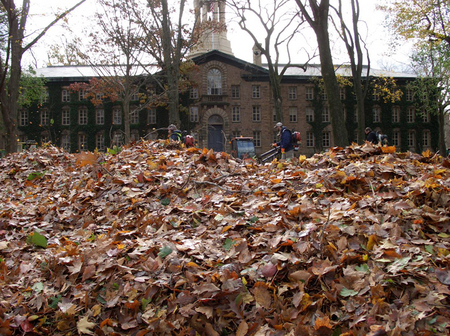
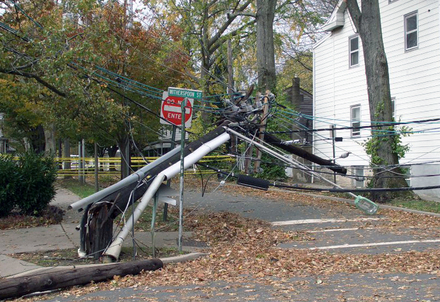


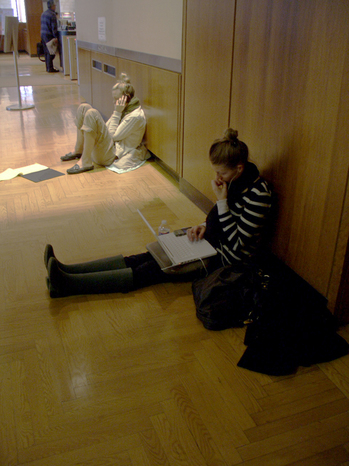

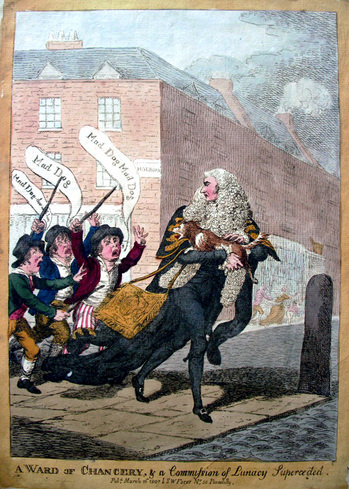
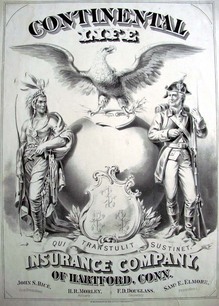
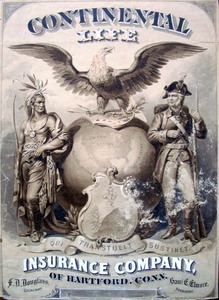
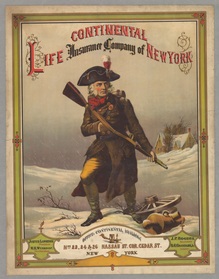
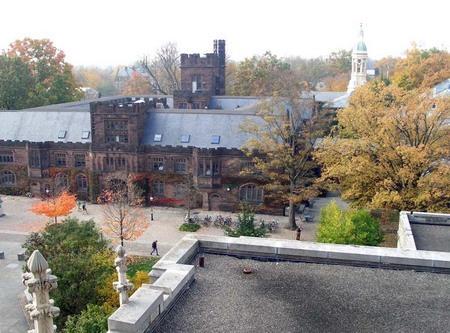

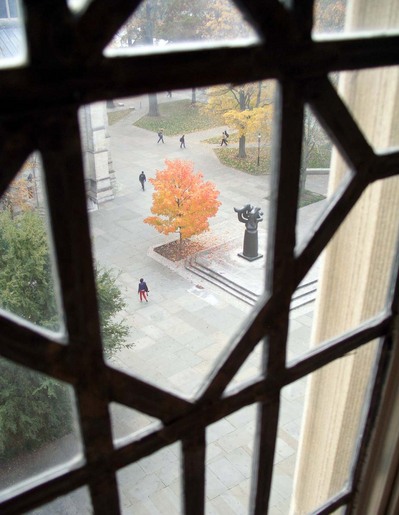
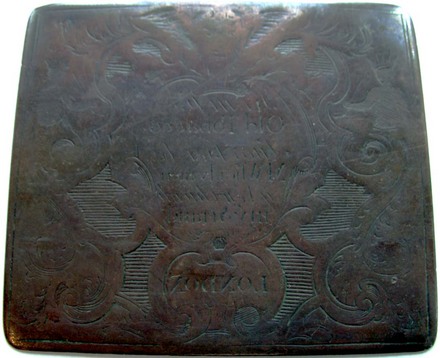
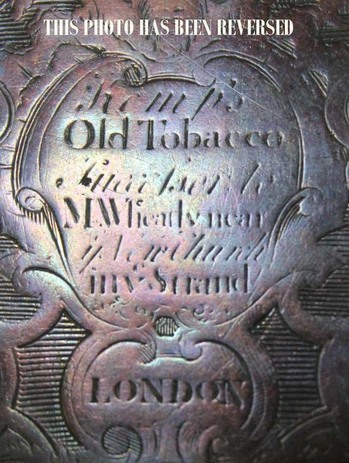
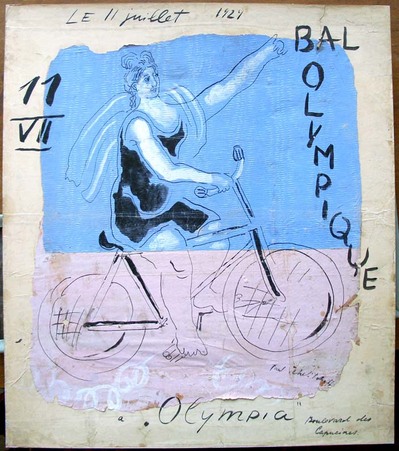
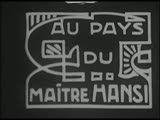
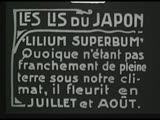



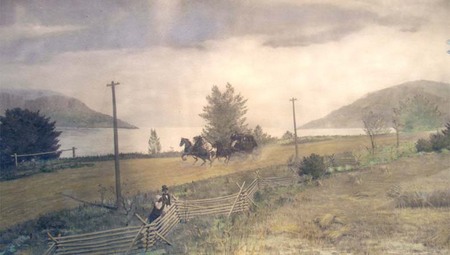
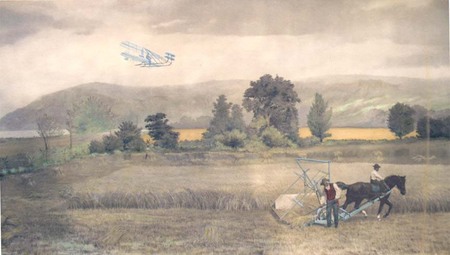
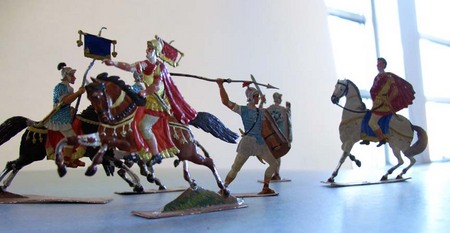
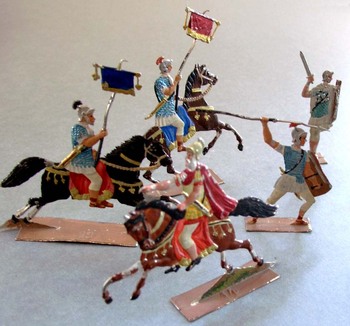
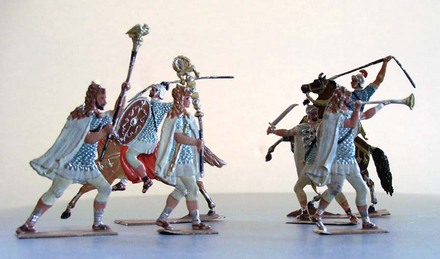
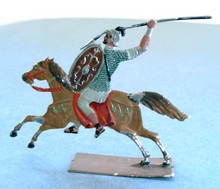
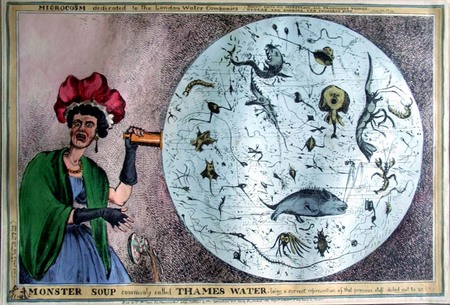
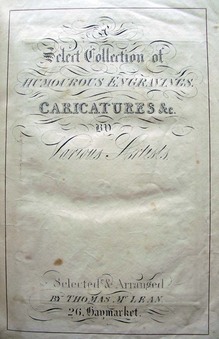
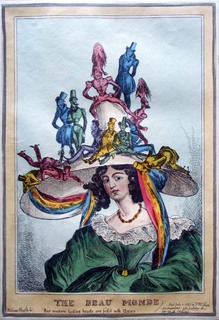
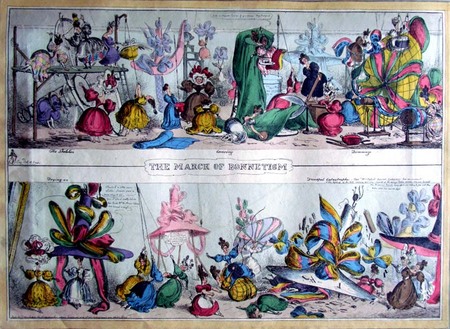
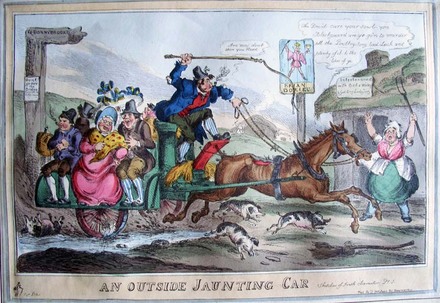
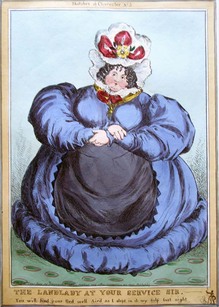
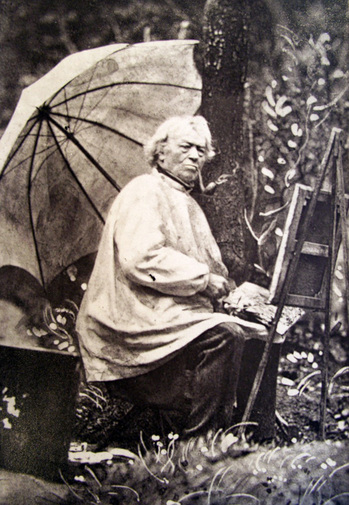
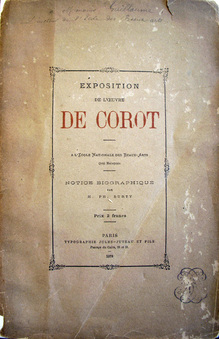
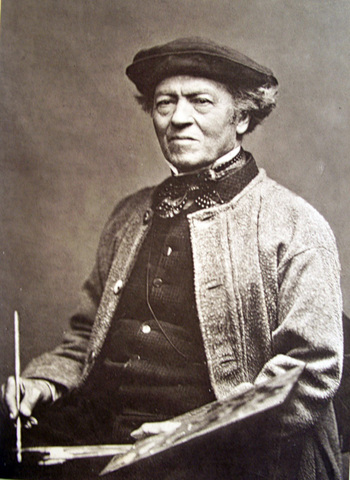
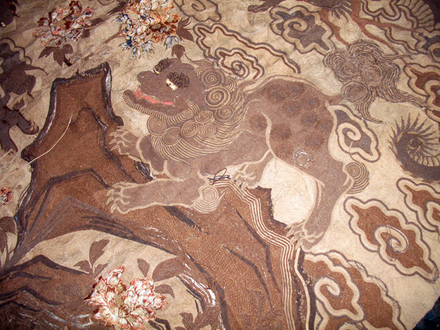
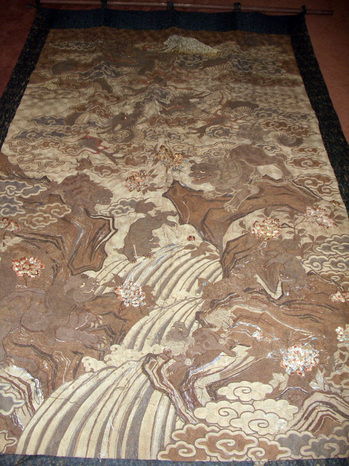
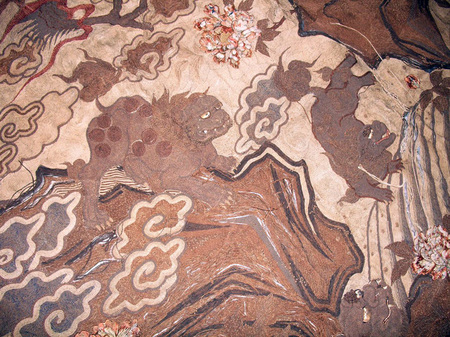
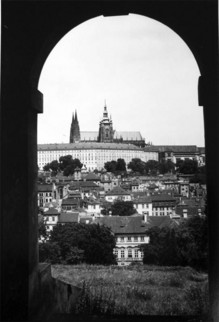
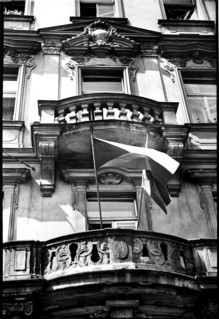
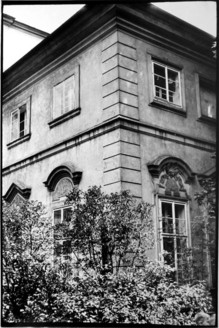
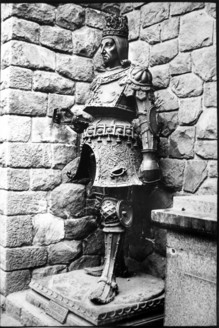
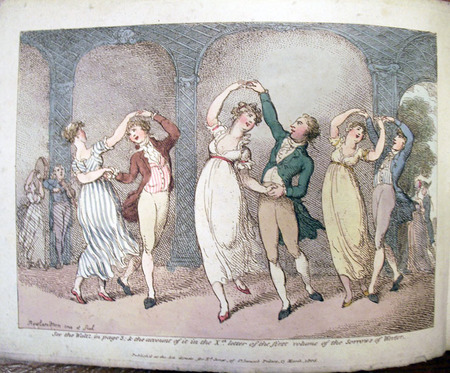
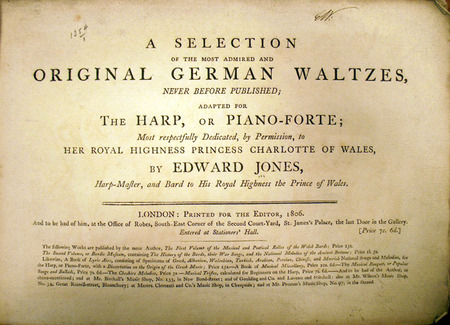
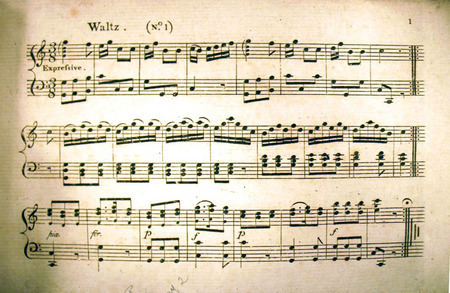
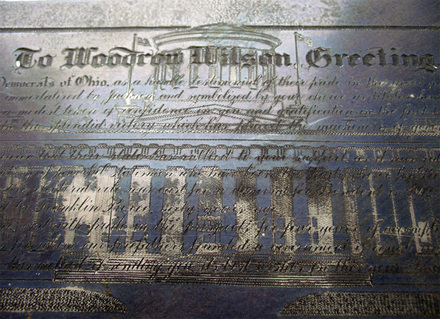
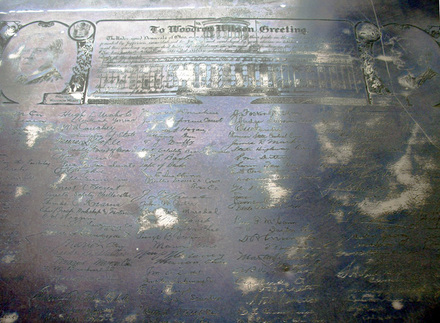
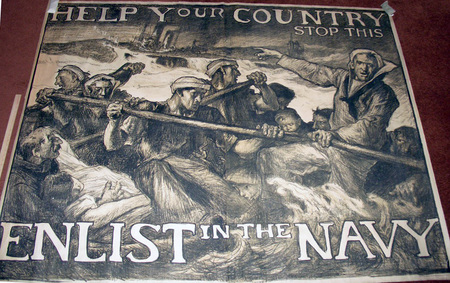
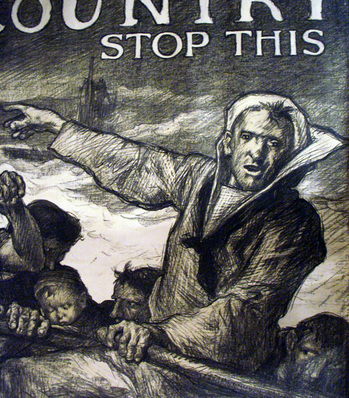
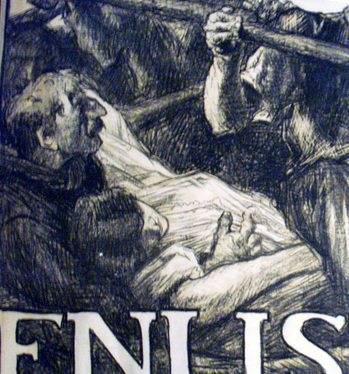
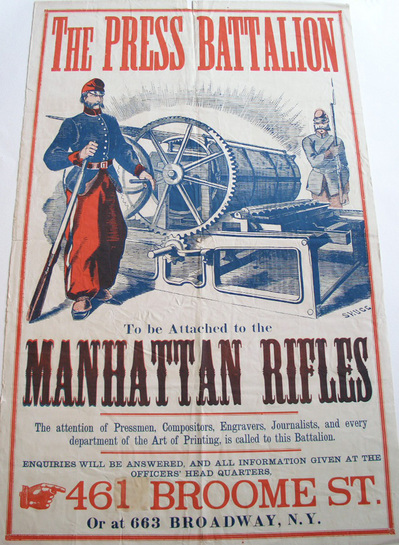
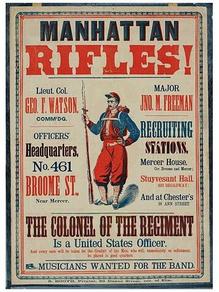
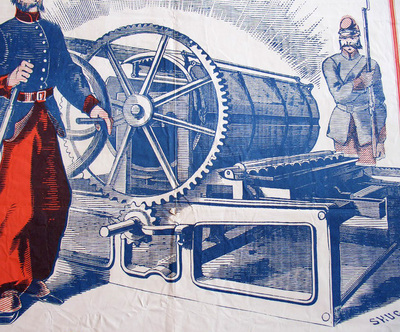
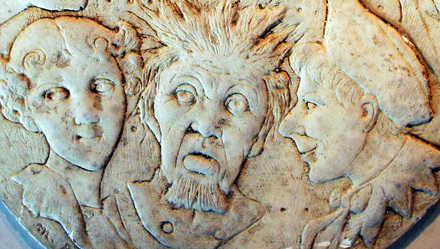
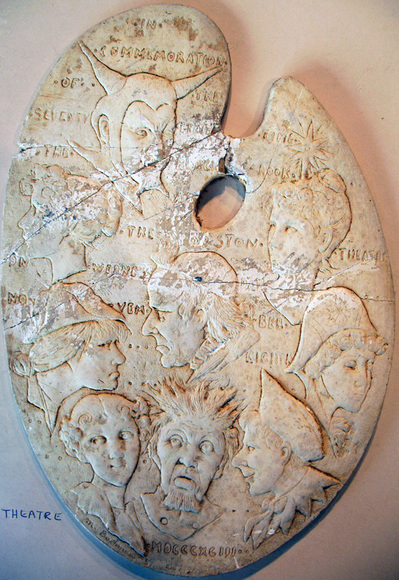
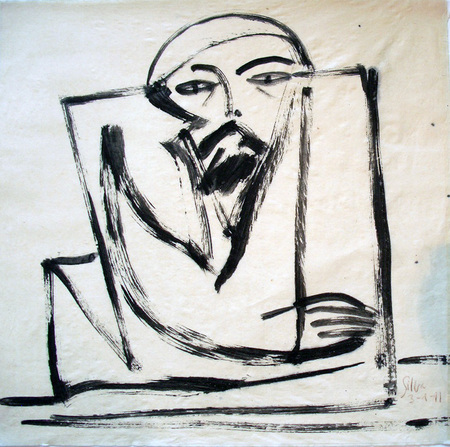
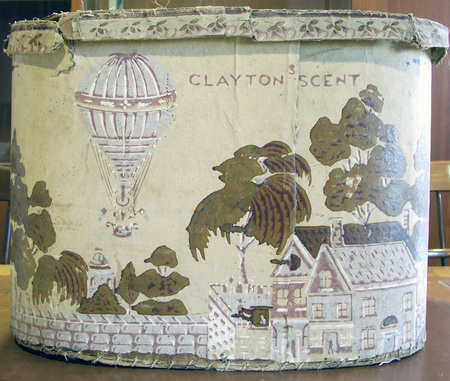
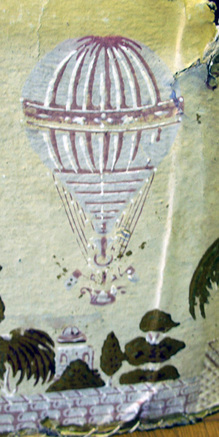
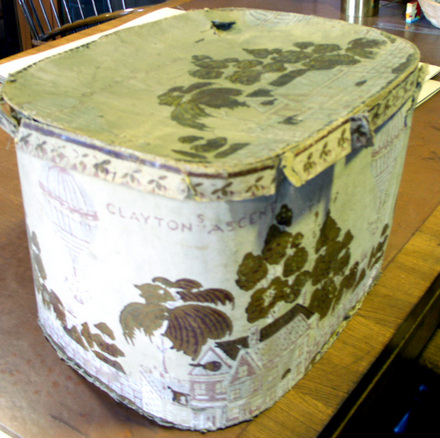
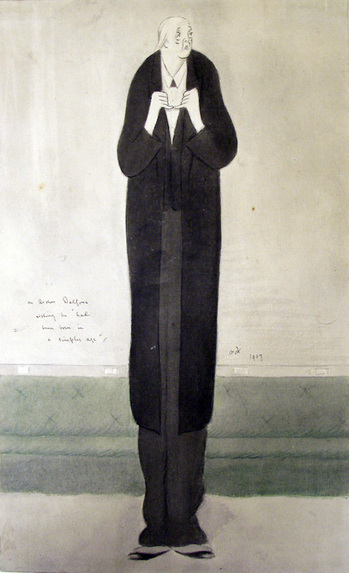
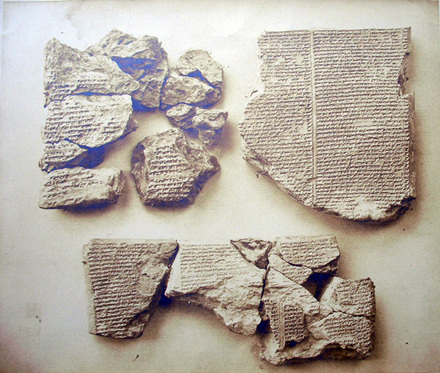
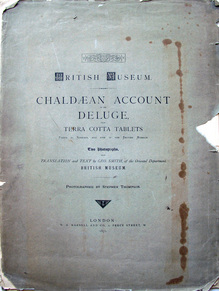
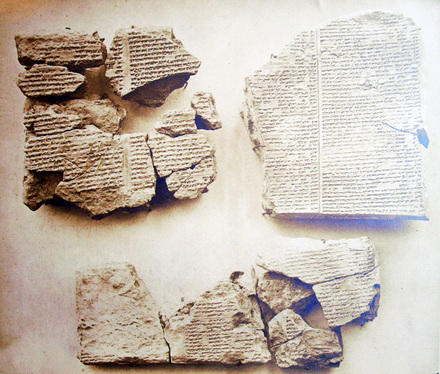
Recent Comments